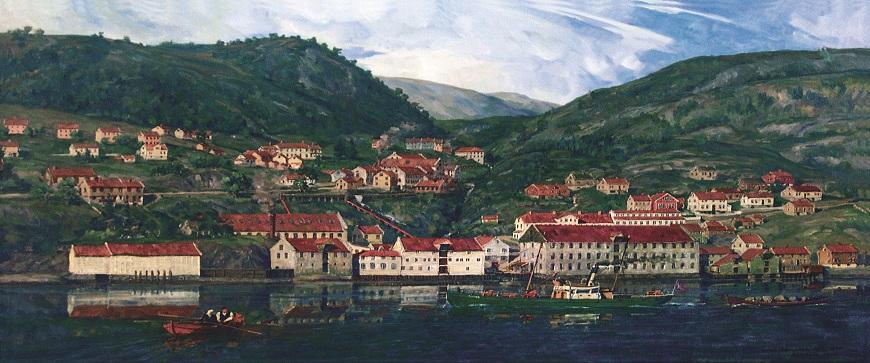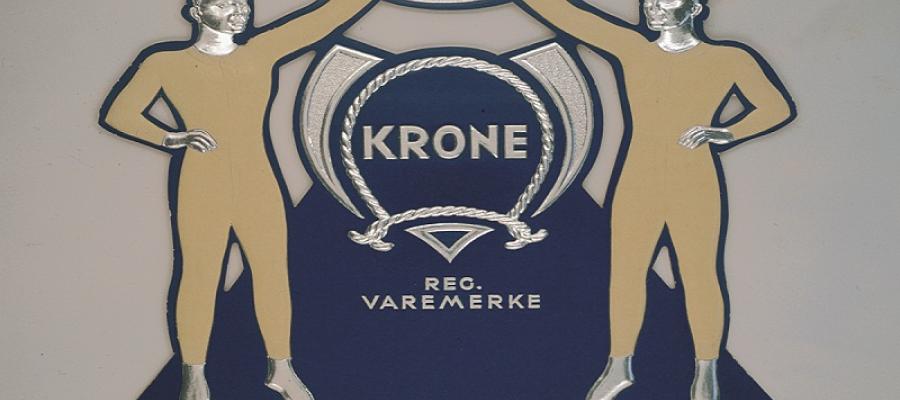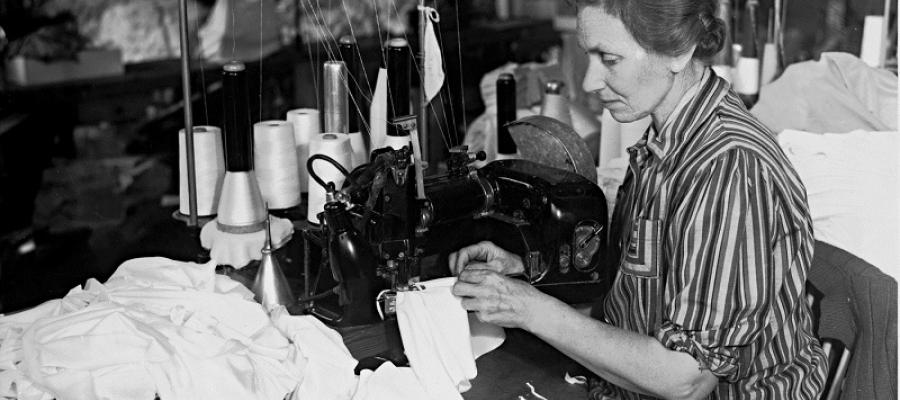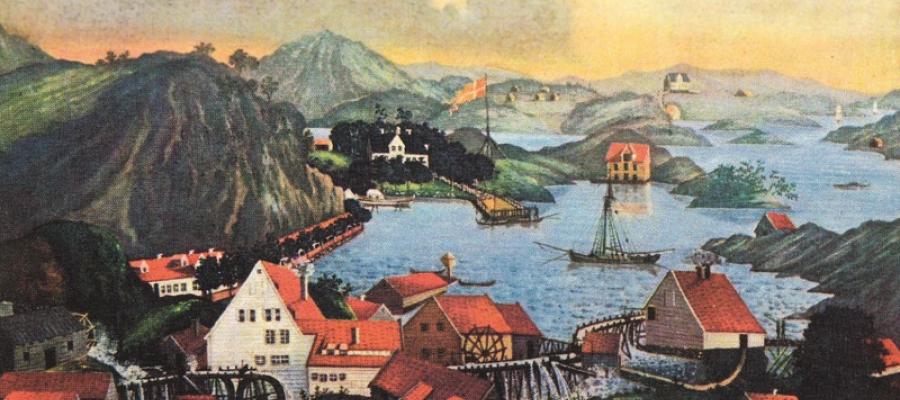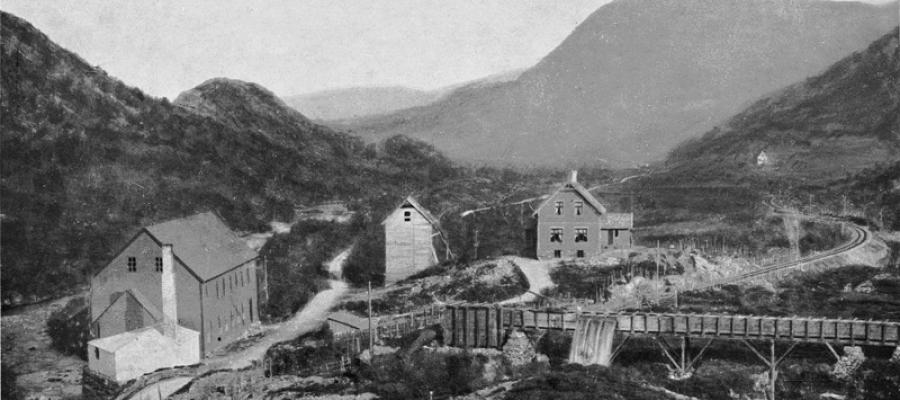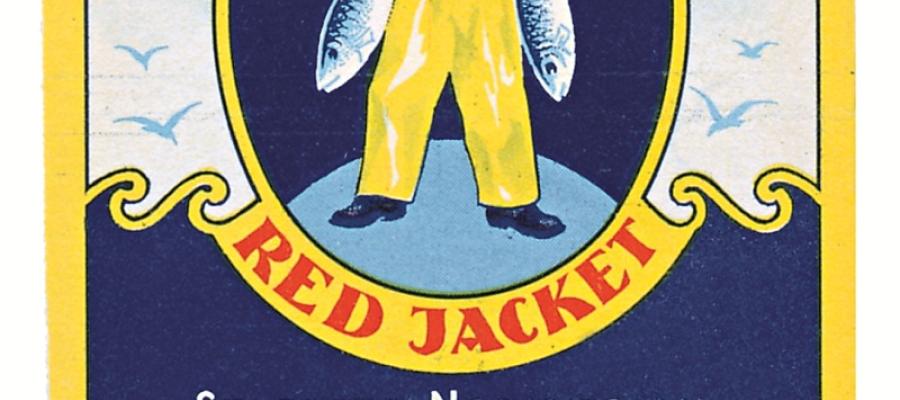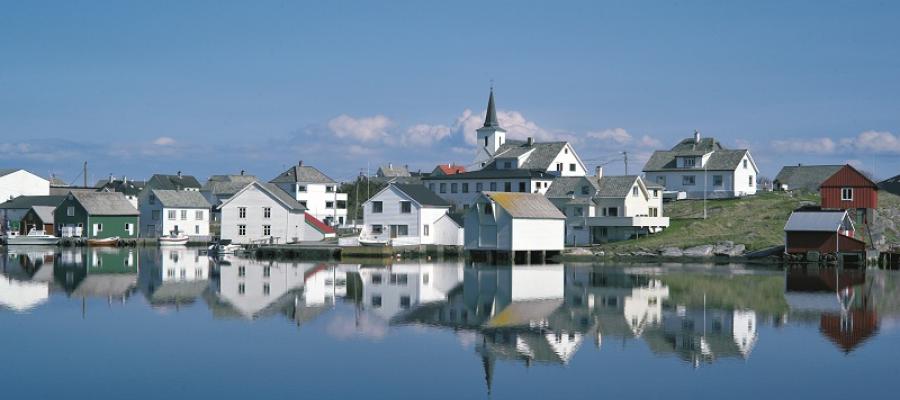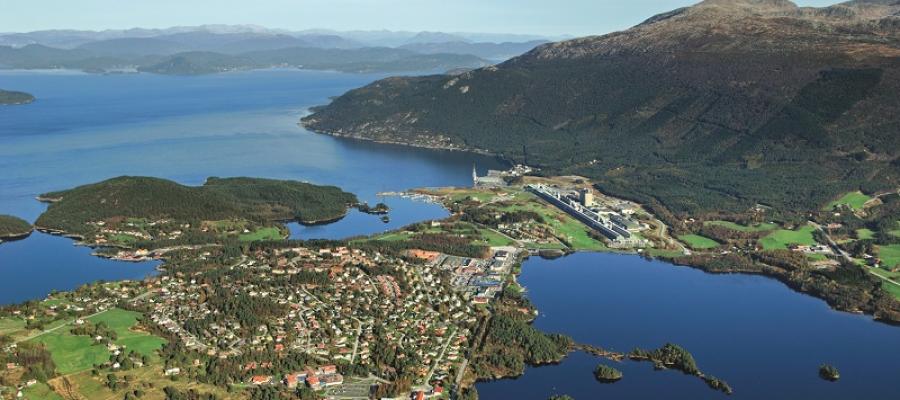The industrial settlement of Ytre Arna in the 1880s. A painting by Ole B.Eyde, 1936. (Egil Korsnes, owner: Høie-Arne a.s.).
The Urban Settlements
A STORY OF TRADE, INDUSTRY AND COMMUNICATION
One Sunday in 1845 young Peder Jebsen from Slesvig took the walk along the post road from Bergen to the north across Borgaskaret. He had taken several such walks in the nearest villages around Bergen to look for a suitable waterfall. After three years work in a Bergen clothing company he had found that it was about time to start a textile factory. The British ban on the export of textile machinery had recently been lifted and Norwegian Customs charges on raw materials were low. From the path above Borgaskaret he came down to Indre Arna, but here the fall on the river was too small. He followed it to Arnavågan and went on out to Ytre Arna until he came upon the Blindheim river. He bought it on the spot.
In this way Sigmund Grieg gives us a thumbnail sketch of the tradition behind industrial magnate Jebsen who gave the push to the development of the first urban settlement (in its modern meaning) outside Bergen. The development of urban settlements after 1850 is a historic process of great significance for the cultural landscape. Besides the great land reforms and the new ways of working in agriculture, the changes in the settlement pattern and the building of a road network with roads, bridges and cuttings were the single factors which have most significantly contributed to the metamorphosis of the county’s physical visage in the last 150 years. The forces which have driven this process forward are thus cultural factors of great importance.
The Janus factory at Espeland was a big employer of women. (Atelier KK (1930-årene), eier Picture Collection, Universitetet i Bergen Bibliotek (KK 401/12)).
The label from Bergenhus Canning belongs to the boom period for the fisheries industry in the west of Norway. The sardines were canned in the individual factories e.g. at Davanger and in Hetlevik on Askøy, and thereafter the label was stuck on for export all over the world. The production of these labels created new jobs in the printing industry in Bergen and Stavanger.(owner: Fiskerimuseet).
The big industrial facilities which were built on the farming properties at Husnesvågen in the 1960s came about in the last classical industrial growth period, before environmental issues began to make themselves felt. The aluminium factory created a new settlement and gave impulses to the old ones. (Jan Rabben).
